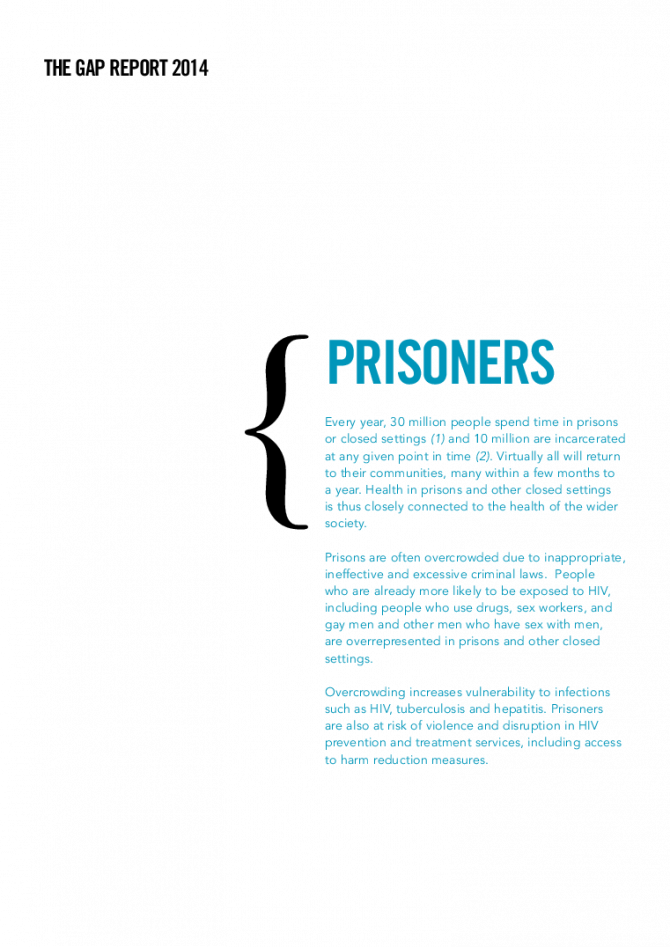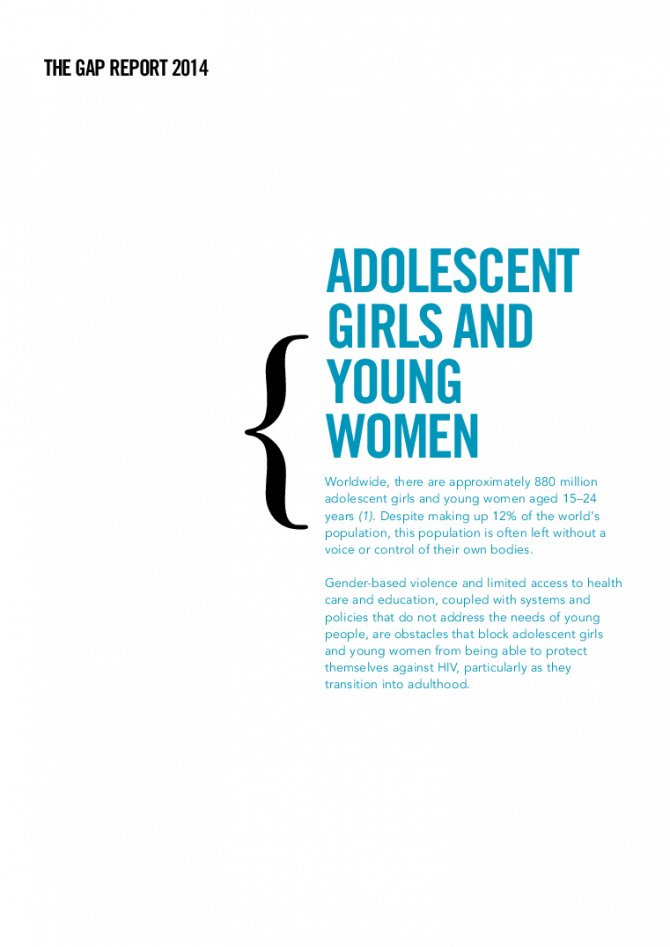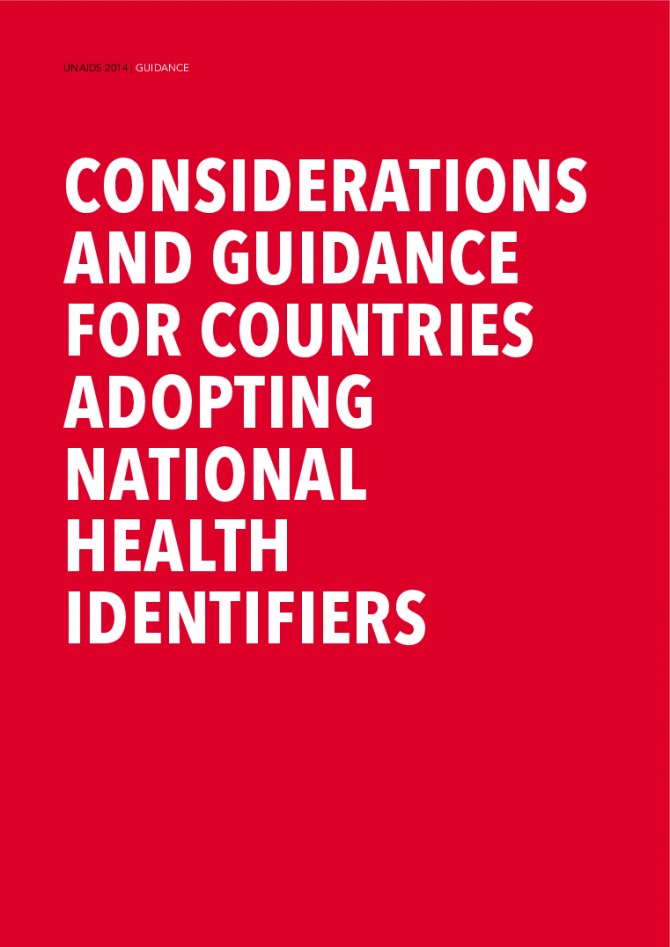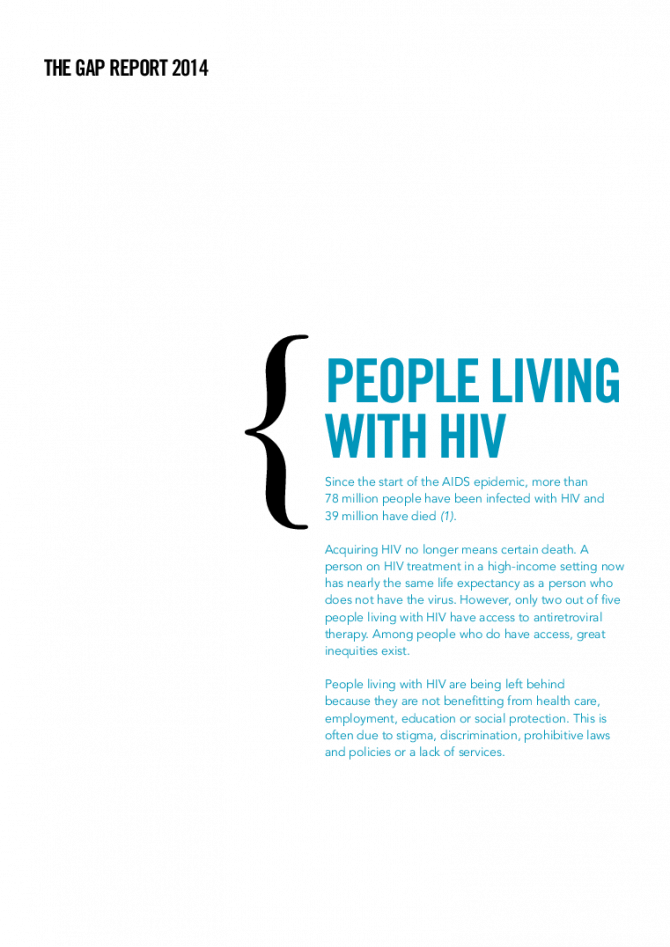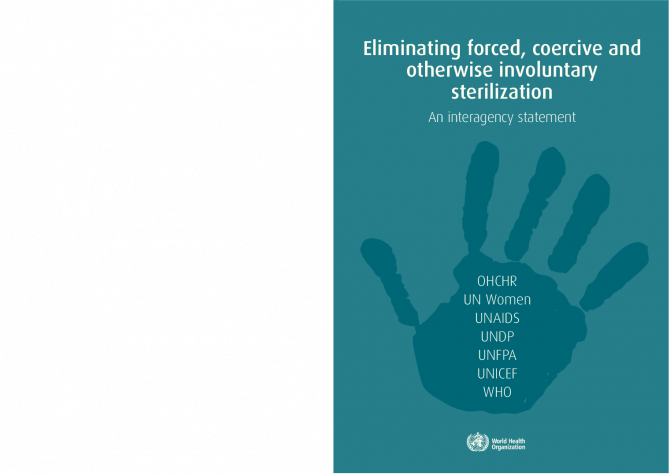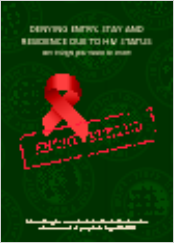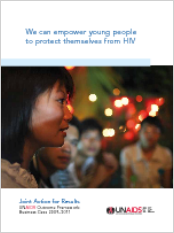Documents
Prisoners
16 October 2014
Every year, 30 million people spend time in prisons or closed settings and 10 million are incarcerated at any given point in time. Virtually all will return to their communities, many within a few months to a year. Health in prisons and other closed settings is thus closely connected to the health of the wider society. Prisons are often overcrowded due to inappropriate, ineffective and excessive criminal laws. People who are already more likely to be exposed to HIV, including people who use drugs, sex workers, and gay men and other men who have sex with men, are overrepresented in prisons and other closed settings. Overcrowding increases vulnerability to infections such as HIV, tuberculosis and hepatitis. Prisoners are also at risk of violence and disruption in HIV prevention and treatment services, including access to harm reduction measures.
Documents
Adolescent girls and young women
16 October 2014
Worldwide, there are approximately 880 million adolescent girls and young women aged 15–24 years. Despite making up 12% of the world’s population, this population is often left without a voice or control of their own bodies. Gender-based violence and limited access to health care and education, coupled with systems and policies that do not address the needs of young people, are obstacles that block adolescent girls and young women from being able to protect themselves against HIV, particularly as they transition into adulthood.
Documents
Gender matters: overcoming gender-related barriers to prevent new HIV infections among children and keep their mothers alive
14 October 2014
After more than 30 years of the HIV epidemic—and an unprecedented medical and social response—discrimination, violence, harmful gender norms and related stigma continue to pose challenges to an effective HIV response. The findings of these assessments indicate that gender-related barriers pose significant obstacles to the uptake of services that prevent new HIV infections among children and keep mothers alive—obstacles that require urgent attention. Without dedicated attempts to overcome these gender-related barriers, current efforts will meet with limited success, and the needs and rights of both women and children will remain compromised.
Documents
Considerations and guidance for countries adopting national health identifiers
01 June 2014
Documents
People living with HIV
07 October 2014
Since the start of the AIDS epidemic, more than 78 million people have been infected with HIV and 39 million have died. Acquiring HIV no longer means certain death. A person on HIV treatment in a high-income setting now has nearly the same life expectancy as a person who does not have the virus. However, only two out of five people living with HIV have access to antiretroviral therapy. Among people who do have access, great inequities exist. People living with HIV are being left behind because they are not benefitting from health care, employment, education or social protection. This is often due to stigma, discrimination, prohibitive laws and policies or a lack of services.
Documents
Eliminating forced, coercive and otherwise involuntary sterilization - An interagency statement
01 May 2014
Like any other contraceptive method, sterilization should only be provided with the full, free and informed consent of the individual. However, in some countries, people belonging to certain population groups, including people living with HIV, persons with disabilities, indigenous peoples and ethnic minorities, and transgender and intersex persons, continue to be sterilized without their full, free and informed consent. This statement aims to contribute to the elimination of forced, coercive and otherwise involuntary sterilization. It reaffirms that sterilization as a method of contraception and family planning should be available, accessible, acceptable, of good quality, and free from discrimination, coercion and violence, and that laws, regulations, policies and practices should ensure that the provision of procedures resulting in sterilization is based on the full, free and informed decision-making of the person concerned.
Documents
Policy Brief - HIV, food security and nutrition
23 March 2009
Often neglected, food security and nutrition are critical for individuals, households and communities affected by HIV. Lack of food security and poor nutritional status may hasten progression to AIDS-related illnesses and undermine adherence and response to antiretroviral therapy. HIV infection itself undermines food security and nutrition by reducing work capacity and jeopardizing household livelihoods.
Documents
We can empower young people to protect themselves from HIV
16 December 2010
More than half of all sexually transmitted infections, other than HIV, (more than 180 million out of a global annual total of 340 million) occur among young people aged 15 to 24. Yet most young people still have no access to sexual and reproductive health programmes that provide the information, skills, services, commodities, and social support they need to prevent HIV. In fact, many laws and policies go as far as to exclude young people from accessing sexual health and HIV-related services, such as HIV testing and counselling, the provision of condoms, and age-appropriate sexuality and HIV prevention education.

